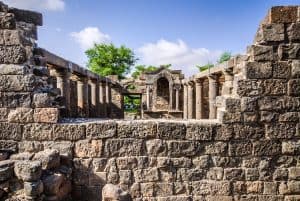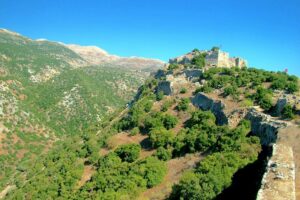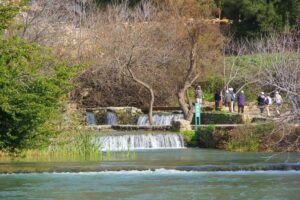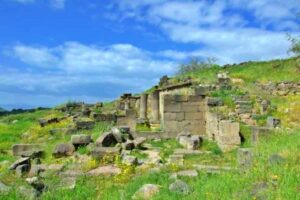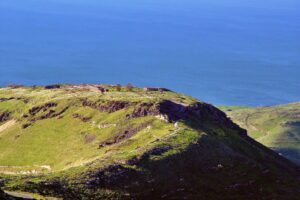History & Heritage
home page / History & Heritage
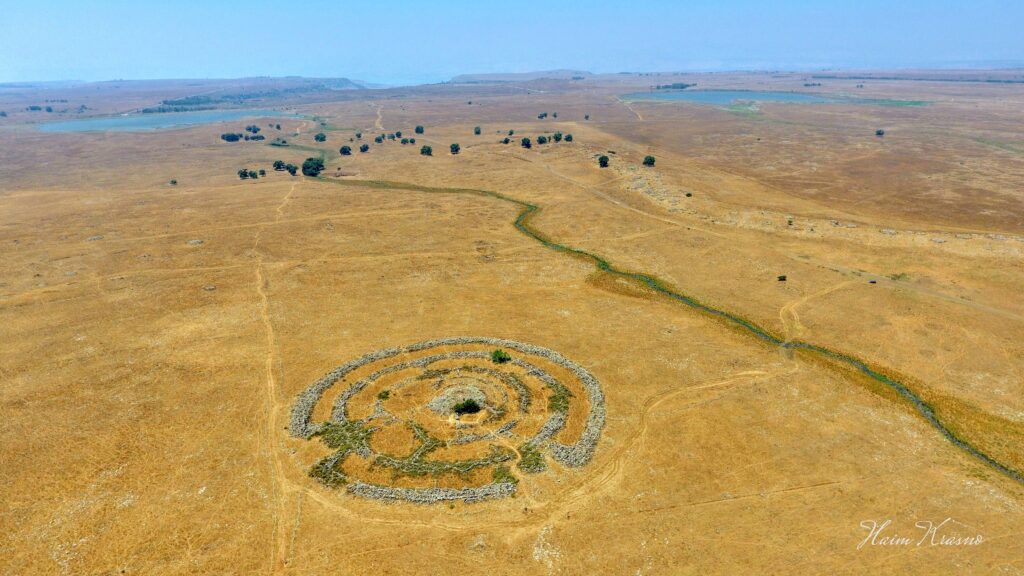
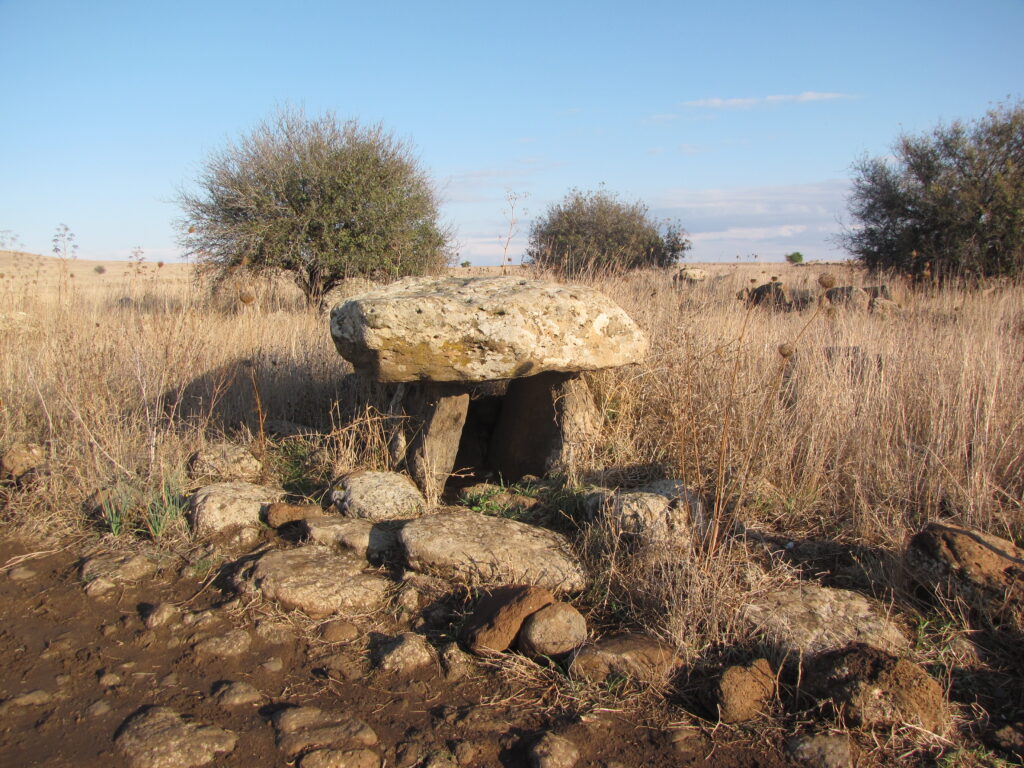
The Golan is chock-full of archaeological sites that tell the story of the constant presence of villages in the area, from prehistoric times until the end of the Byzantine Period. The remains of ancient synagogues, decorated lintel stones, building ruins, mosaic floors, and other ancient relics, show how Jews have lived in this unique area for over 2,000 years.
A visit to the Golan can be a great opportunity to visit one or more archaeological sites.
One can do an entire day-tour that focuses specifically on ancient synagogues, or of prehistoric sites; another option is to do a day that follows the chronological history of the area. There were many cultures present in the Golan over time, and it is fascinating to see how each were similar, yet different. It is also possible to join (at times) various archaeological digs that take place in the Golan, and allow the general public to take part. This can be an exciting and memorable experience for the entire family.
One unique phenomenon in the area is the presence of Dolmen fields. A dolmen (from the ancient Briton word for “stone table”) is a megalithic formation built from giant rocks that form a table-like structure. Many thousands of dolmens have been discovered so far in the Golan. Archaeologists believe that these stone structures were constructed by nomadic clans for human burial, some 4,000 years ago.
Another unique site is Rujum el-Hiri, a gigantic stone structure approximately 5,500 years-old, that consists of three concentric rings of huge basalt stones, in the center of which is a dolmen. When seen from above, the site reminds many of Stonehenge…or of a maze for mice.
More than 30 ancient synagogues have been uncovered in the Golan, all from 1,400 to 2,000 years ago. You can visit the Gamla Nature Reserve and enjoy great views, nature, and archaeology. In Gamla, an ancient Jewish city was uncovered from the time of the Second Temple. The residents of Gamla took part in the Great Revolt against the Romans, which – in the end – led to the destruction of the town. During the excavations, evidence was found that told the story of the difficult battle. One can descend the ancient path and visit the ruins of Gamla, including the Second Temple-era synagogue, the prominent round tower that looms over the valley below, and the ancient olive presses. This trek is for advanced hikers, and takes about 3-4 hours.
For those who prefer an easier visit in Gamla, one can see the camel-shaped city from the path above. Since the cliffs that surround Gamla provide nesting spots for various raptors, you can also see the vulture acclimation cage, which is part of a nation-wide project to help this rare and endangered species make a comeback. In the winter and spring months, we recommend hiking to the Gamla Waterfall Lookout (this hike takes about 1.5 hours), which gives a breathtaking view of Israel’s highest perennial waterfall (51 meters).
We also strongly recommend visiting the National Heritage Site of Ein Keshatot, including its ancient synagogue and spring. This is the first synagogue ever to be rebuilt stone-by-stone, using a unique high-tech method. The site offers an introductory film, and has a small café inside the beautiful visitor center. For more details, click here.
Another impressive synagogue is at Dir Aziz. Near the ancient structure is a spring with small pools and shade – perfect for a picnic.
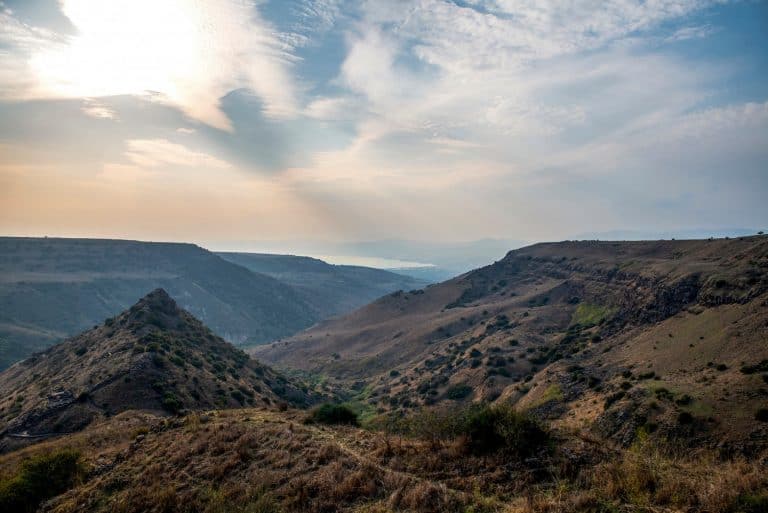
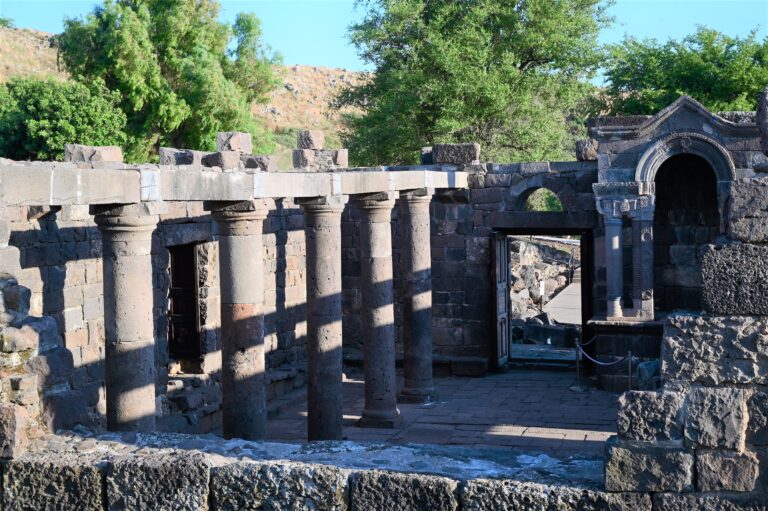
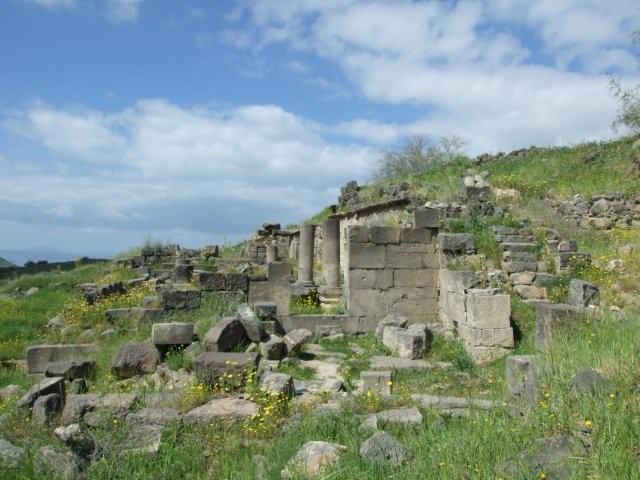
You can get an understanding of the archaeological richness of the Golan by visiting the Golan Archaeological Museum in Katzrin. Not your average museum, this site features artifacts from the most interesting excavations that have taken place in the Golan over the years. There’s also a film about the ancient city of Gamla, and another film about the ancient Jewish presence in the Golan.
You can continue your visit by driving just a few minutes away, to the Park Katzrin Talmudic Village. Here you can see a rebuilt ancient Jewish home from Talmudic times, as well as a local ancient synagogue. There are a number of films offered here in a six-screen theater, that explain some of the famous stories of the Talmud.



